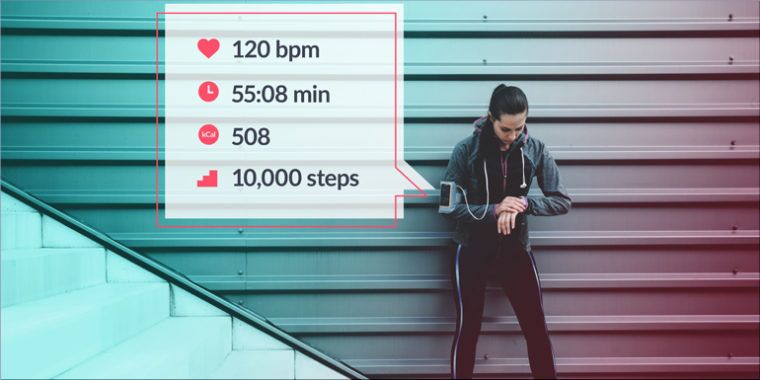Not All Fitness Trackers are Created Similarly
The present health monitoring state is outstanding. Numerous applications allow measuring your steps, calorie intake, fluid consumption and remind you to get up and be active. If you’re dedicated, a phone attachment can record different fitness activities. Low-priced devices track steps and distance, and mid-range models provide a breakdown of running segments and mile count in cycling. Costly models are waterproof and track several activities, making them a versatile choice.
Fitness Trackers
Do you want to discover what these fitness trackers all share? Since none of them are human-proof and most lack essential components to ensure correctness, they are all lies.

Are Wrist-Worn Fitness Trackers Accurate for Heart Rate Monitoring?
A recent Cleveland Clinic report suggests that most wrist-worn action trackers are not accurate for heart rate monitoring when compared to traditional chest straps. However, the Apple Watch stands out as an exception among fitness trackers.
The scientists fitted 50 volunteers with an EKG, a chest tie screen, and two of four wrist-worn fitness trackers (Apple Watch, Fitbit Blaze, Garmin Forerunner 235, and TomTom Spark Cardio). At that point recorded the volunteers’ heart rates very still and amid three exercise forces (light, direct, energetic) on three cardio machines (treadmill, stationary bicycle, and circular).
The chest lashes most precisely coordinated the EKG in all cases. While not astonishing (like an EKG, a chest lash measures the electrical activity of the heart), it in any case strengthens the chest tie’s notoriety for being the highest quality level for measuring exercise force. With respect to the wrist-worn fitness trackers, every one of them precisely announced heart rate very still, yet just the Apple Watch kept on giving exact heart rate readings as exercise power expanded.
Also Read:
5 Best things to eat before workout to stay energetic throughout the session
Like the other wrist-worn screens in the examination, the Apple Watch utilizes optical sensors to screen the bloodstream, which is ordinarily a considerably less exact method for measuring heart rate. In addition, everything from sweat and poor fit to skin pigmentation can divert from the perusing. So what’s distinctive about the Apple Watch that enables it to be more precise than its rivals? “It must need to do with the restrictive innovation identified with detecting, and the calculation used to produce heart rate information,” says consider creator Marc Gillinov, MD.
Does this mean you should jettison your non-Apple wearables? Not in any manner. Most fitness trackers are powerful to track movement levels, giving you a sensibly precise picture of day-by-day steps, calories, separation, and rest. In any case, on the off chance that you need to screen force while you work out, an Apple Watch or a chest lash is the approach.
Why You Need to Get More Vitamin D

Not getting enough of the D-vitamin can fundamentally hamper lifting execution. That is the thing that scientists at Oklahoma State University found when they contemplated the impacts of vitamin D levels on vertical jump, triple-bounce (for separate), dash speed, and one-rep max squat in 103 university competitors.
Around 33% of the competitors were found to have “bargained” vitamin D levels (under 72 nanomoles per liter of blood). Those competitors’ one-rep max squats were 77 percent lighter than competitors with “typical” D levels. Additionally, their van runs were 18 percent slower, their vertical jumps were 15 percent lower, and their triple-bounces were 80 percent shorter.
“The reason likely needs to do with the arrival of calcium,” says consider creator Rachel Hildebrand, Ph.D., taking note of that calcium is the thing that triggers muscle compressions. “Vitamin D works inside the muscle cell to help discharge calcium all the more productively, which can prompt more grounded, speedier, all the more intense constrictions.”
Up to 42 percent of grown-ups are lacking in vitamin D, as indicated by an investigation in the diary Nutrition Research. That implies almost 50% of us don’t get the 600 IUs every day prescribed by the National Institutes of Health. To finish off your levels, invest more energy outside (the body produces vitamin D normally when presented to daylight), eat more greasy fish, (for example, salmon), or devour more drain (every last bit of it sold in the United States is invigorated). Vitamin D supplements are likewise a choice.
Pressure Tights Don’t Make You Faster

In case you’re a genuine sprinter, chances are you claim pressure tights. Not to be mistaken for spandex, these additional tight elasticized stockings are thought to defer weakness by lessening muscle vibrations, which trigger constrictions that bite up vitality. Sadly, that reasoning is likely pie in the sky: Compression tights don’t offer any execution benefits, as indicated by an examination at Ohio State University.
The specialists had the investigation members — every accomplished sprinter — keep running at 80 percent of their greatest speed for 30 minutes on two unique events: once while wearing pressure tights and once while not wearing them. The outcome: While the tights lessened muscle vibration, they had no impact on muscle weakness.
Try not to hurl your tights at this time. Different examinations recommend that pressure garments can at present upgrade muscle recuperation and lessen muscle soreness post-exercise. To put it plainly, simply ahead and wear your pressure tights while your run on the off chance that you like the look, yet you’ll receive the most reward by slipping them on a short time later.
Flee from the Treadmill
Running outdoors provides various benefits such as changing scenery, diverse terrain, and the option to run with your furry friend. However, it comes with a significant drawback- the difficulty of watching your favorite TV shows while avoiding obstacles on your route. Besides, you cannot enjoy air conditioning, and sometimes, you have to run in the rain. For those who prefer staying indoors, studies indicate that you must run 15% more quickly on a treadmill to achieve the same level of exertion.
The analysts had 15 men perform interims in three unique conditions: Outside on a track, inside on a mechanized treadmill with a one percent slant (routinely thought to surmised running outside), and inside on a comparatively hoisted treadmill with the speed expanded 15 percent. Just in the third condition did the sprinters measure up to their effort levels in the first. The analysts trust the adaptable board underneath the belt of most treadmills restores some vitality to sprinters, requiring an expansion in speed to kill the favorable position. Another choice: Increase the treadmill’s slope over one percent, or pick a pre-programed course that fluctuates both speed and grade.






